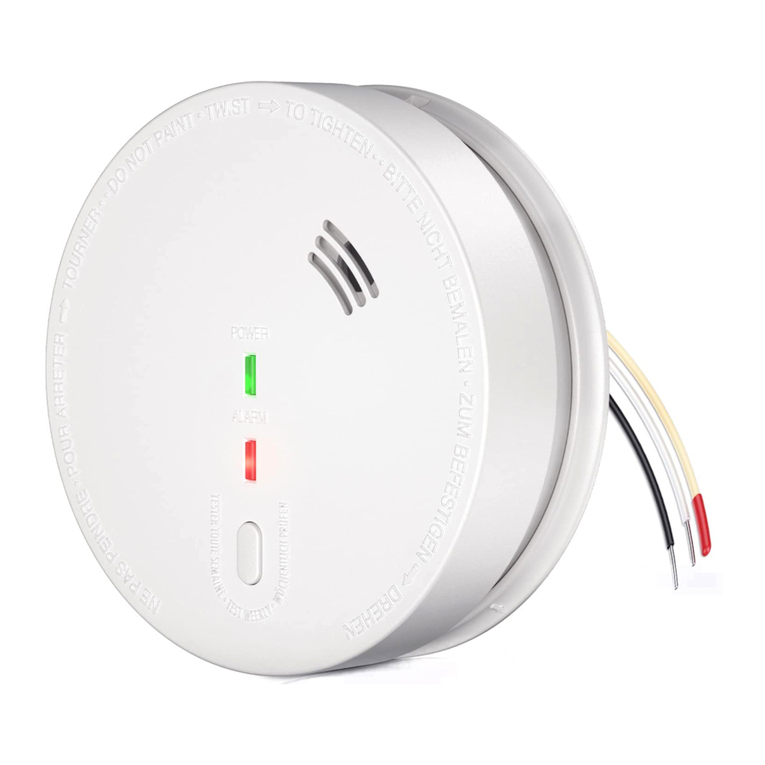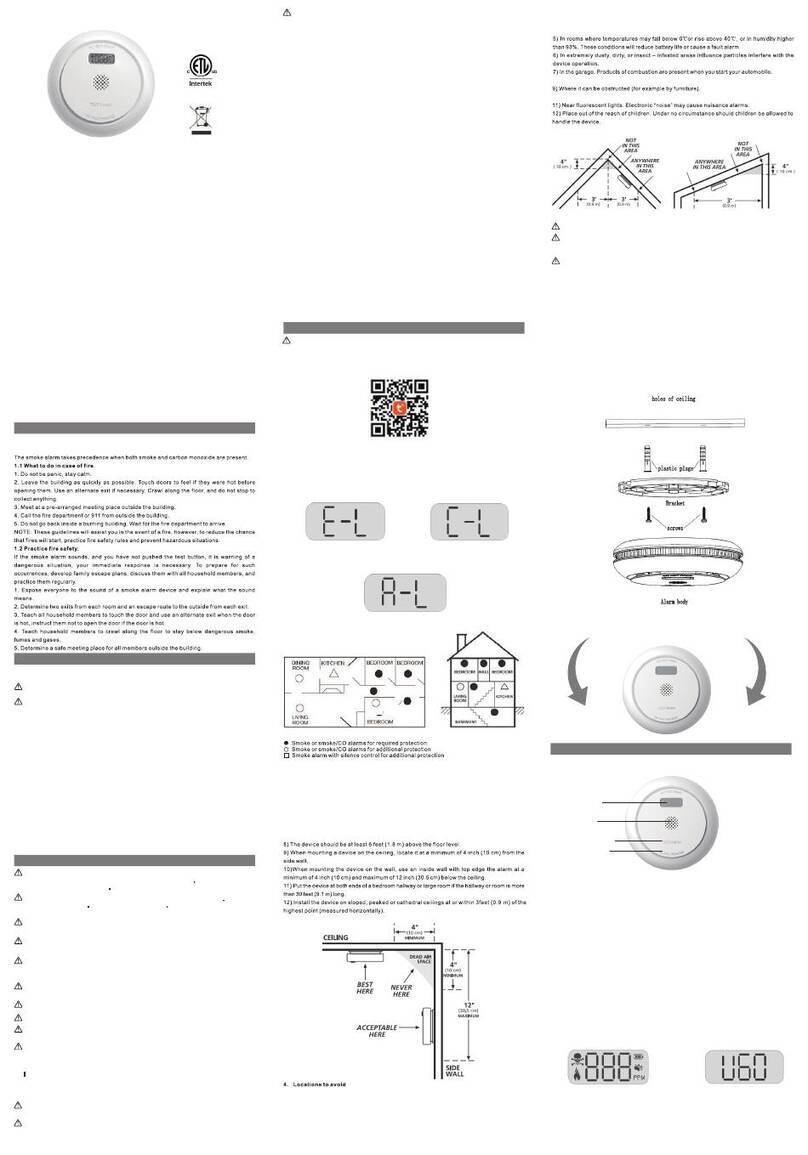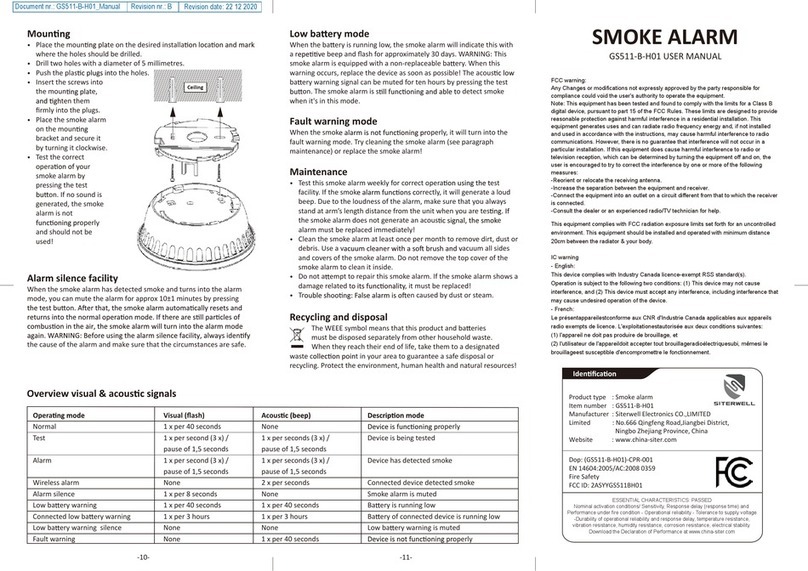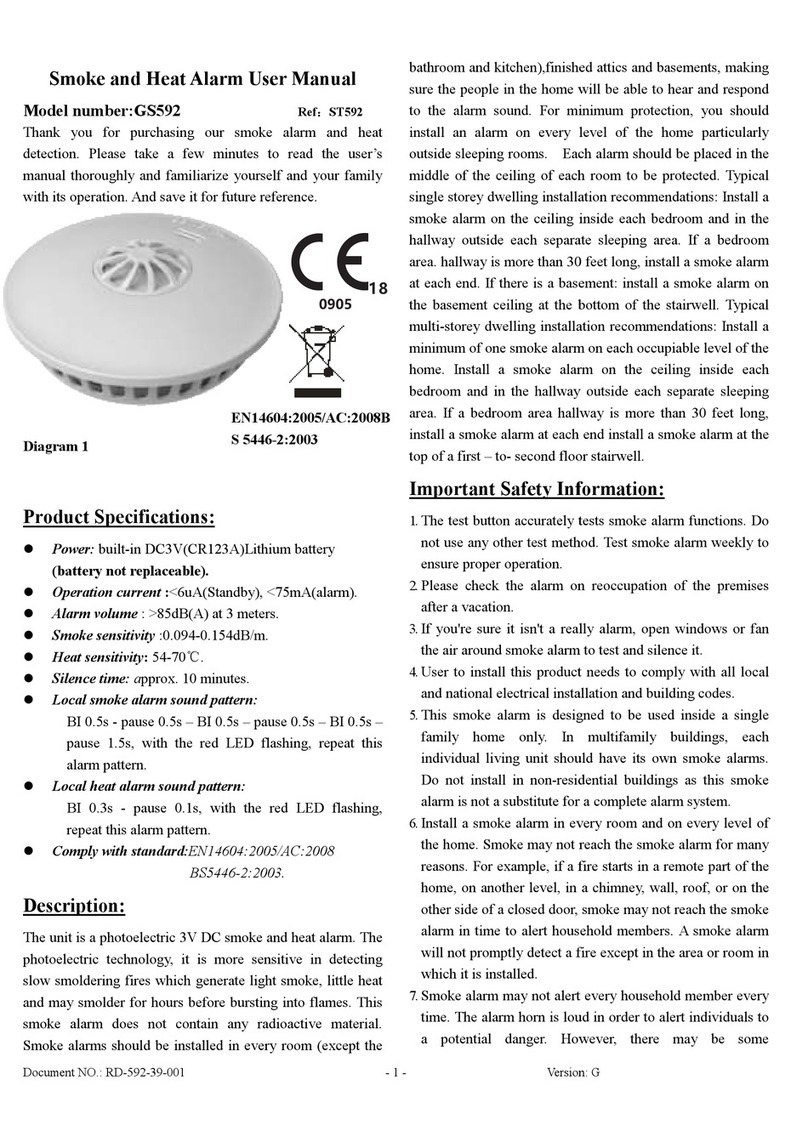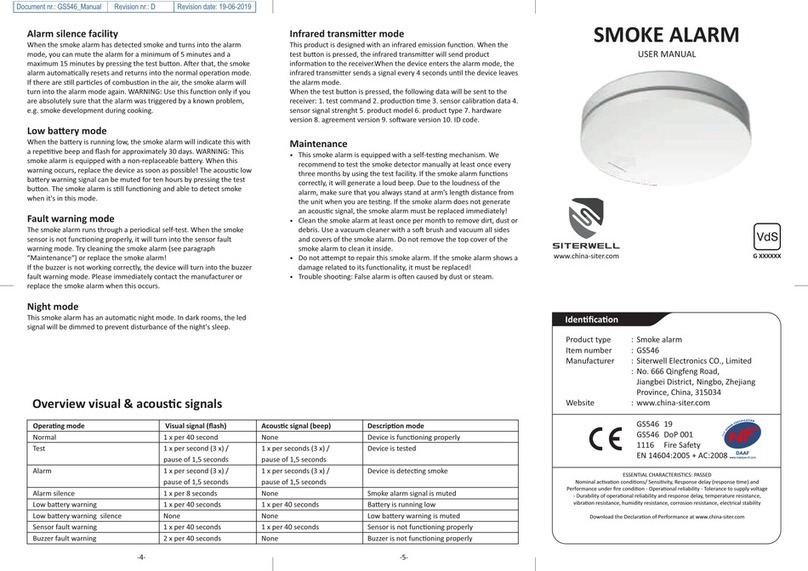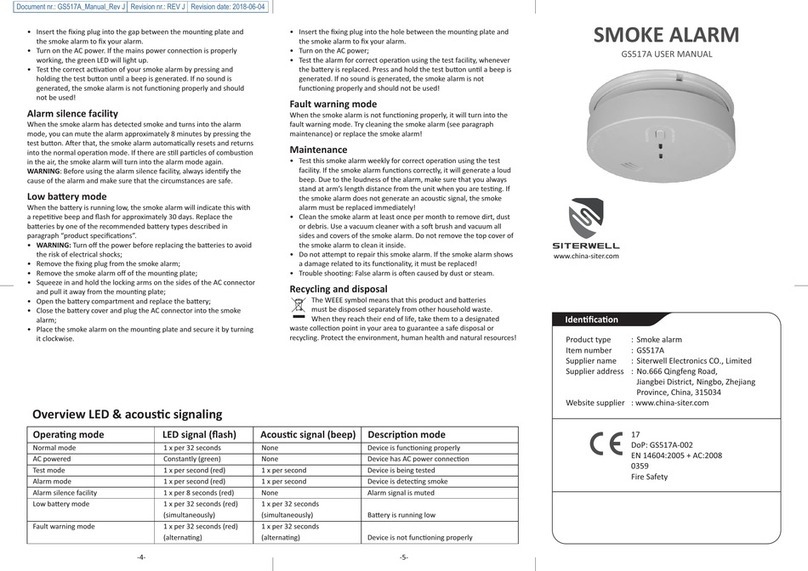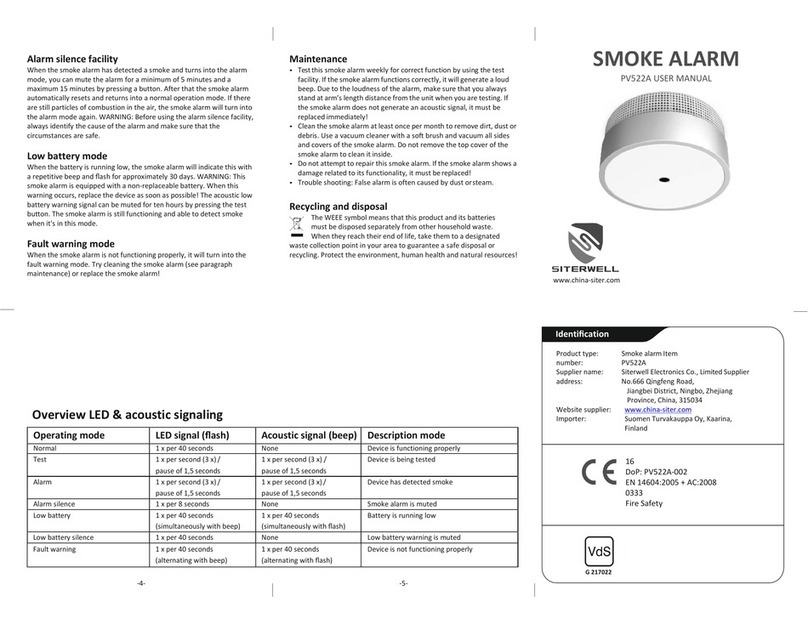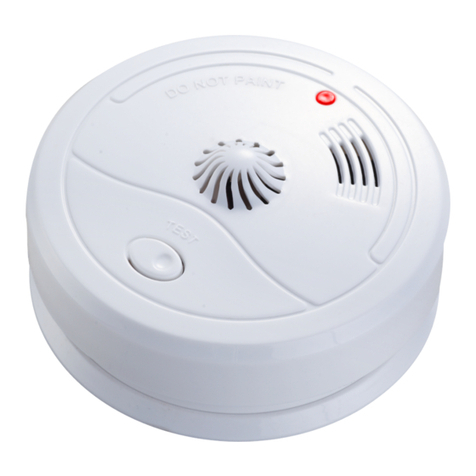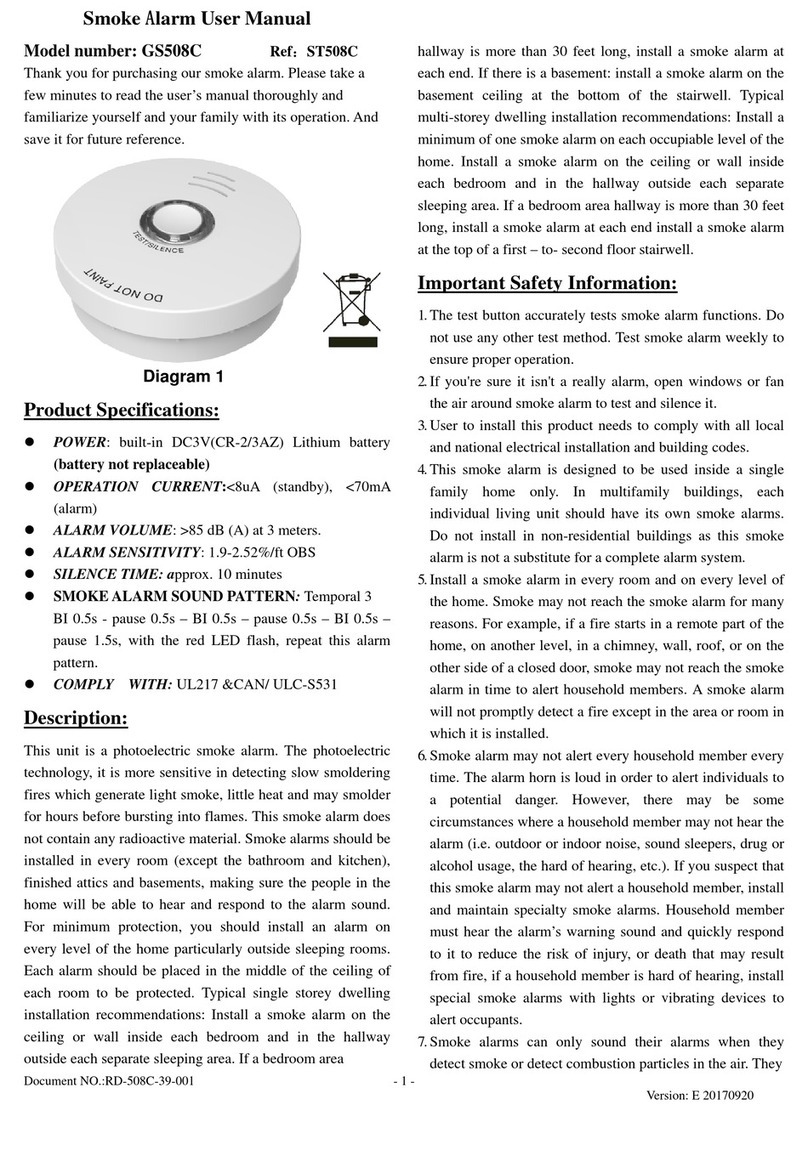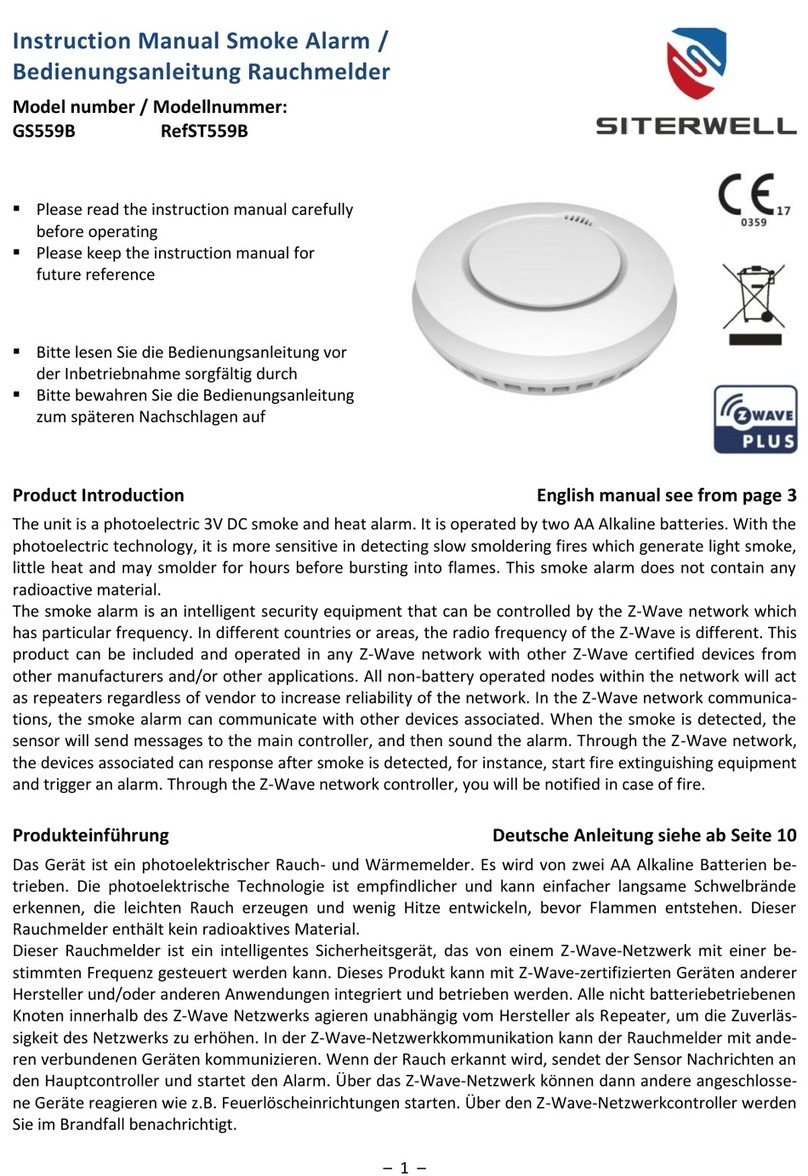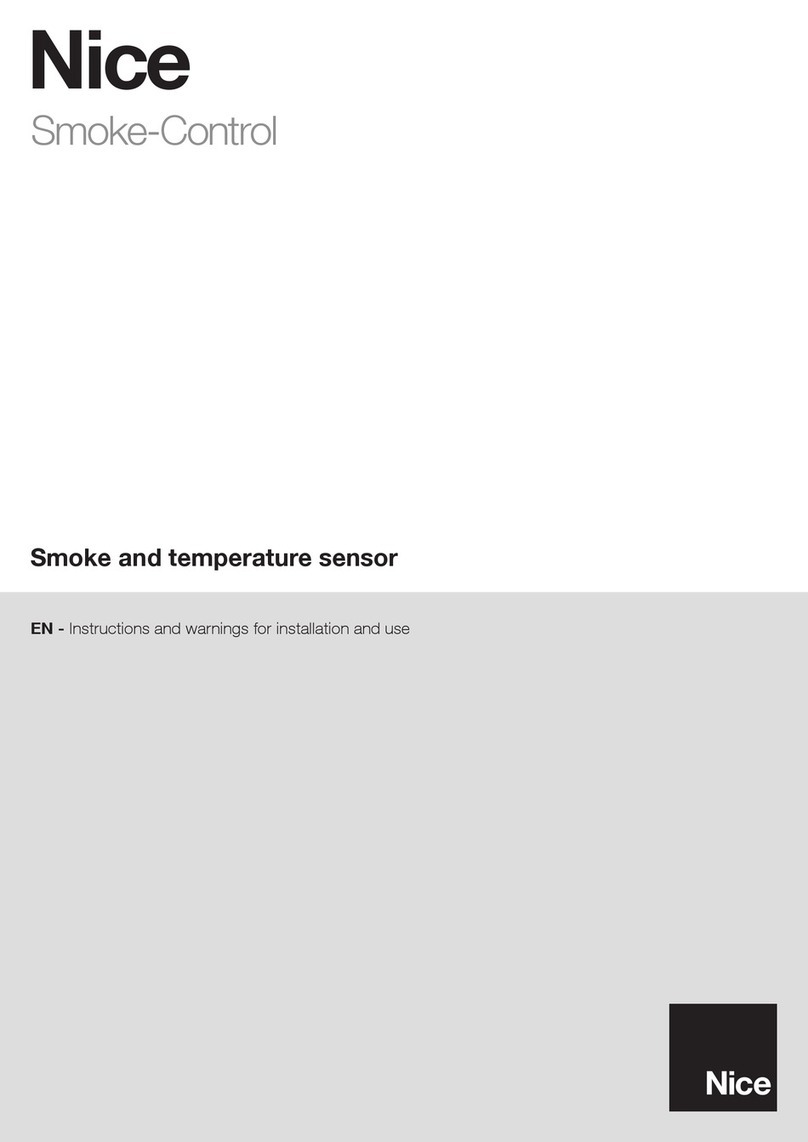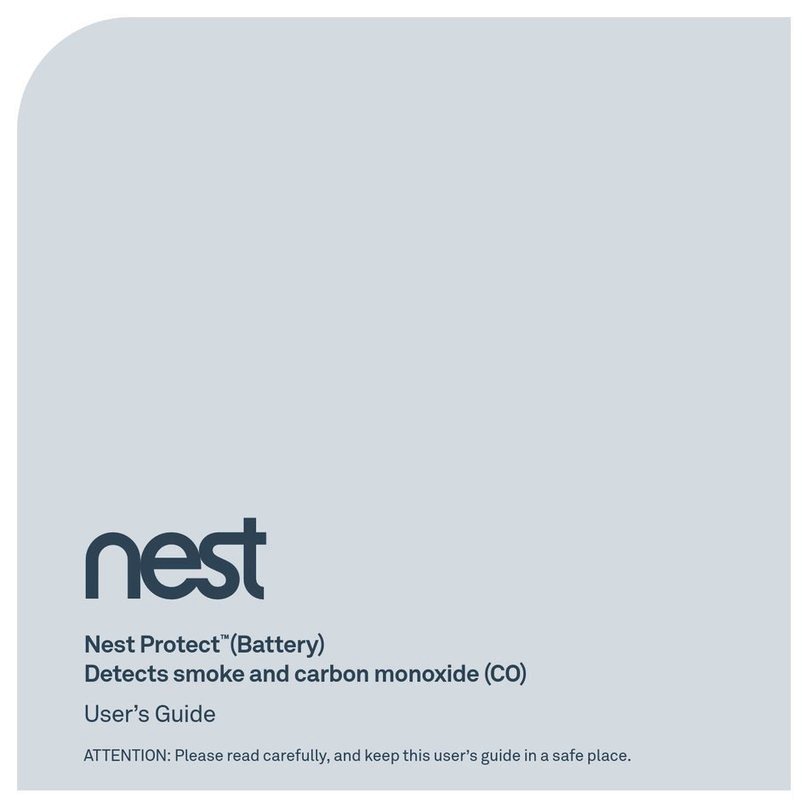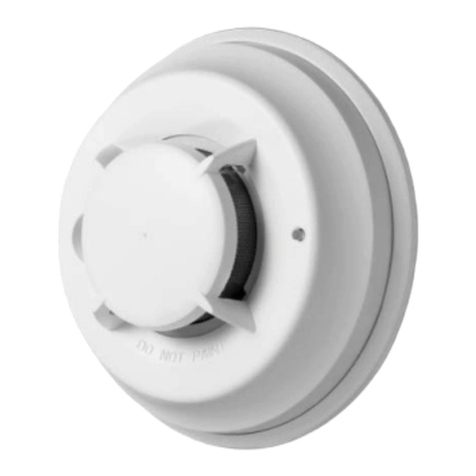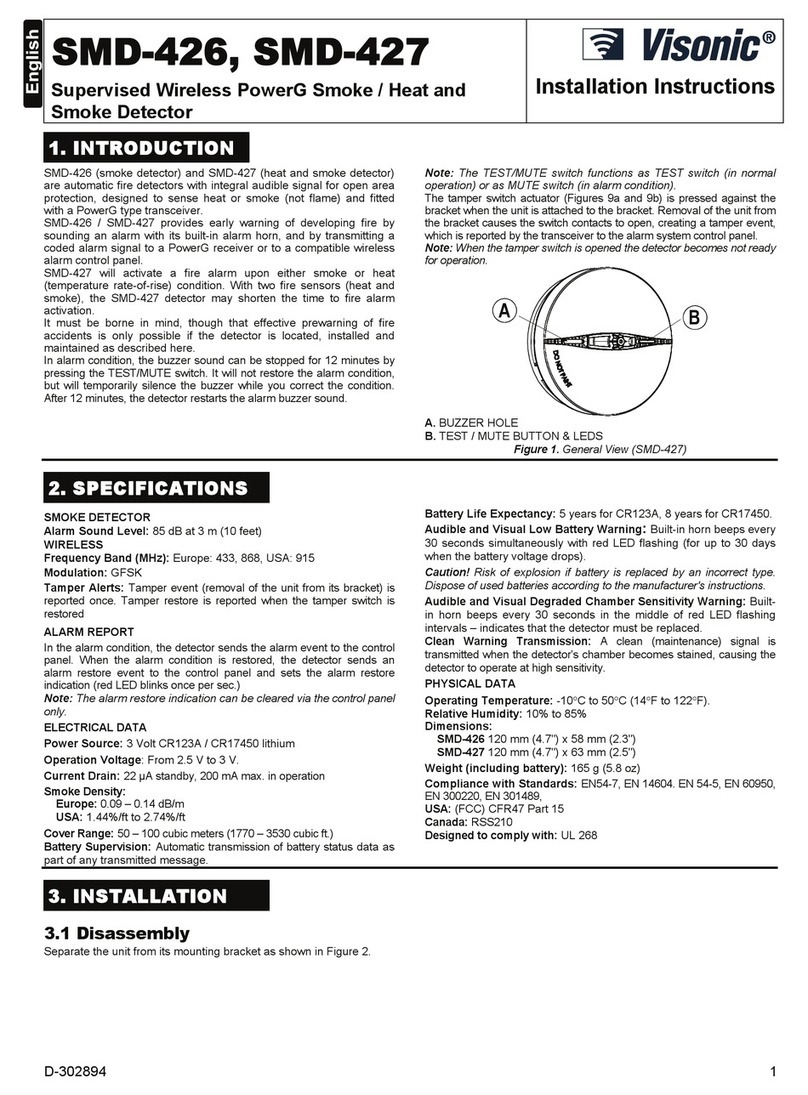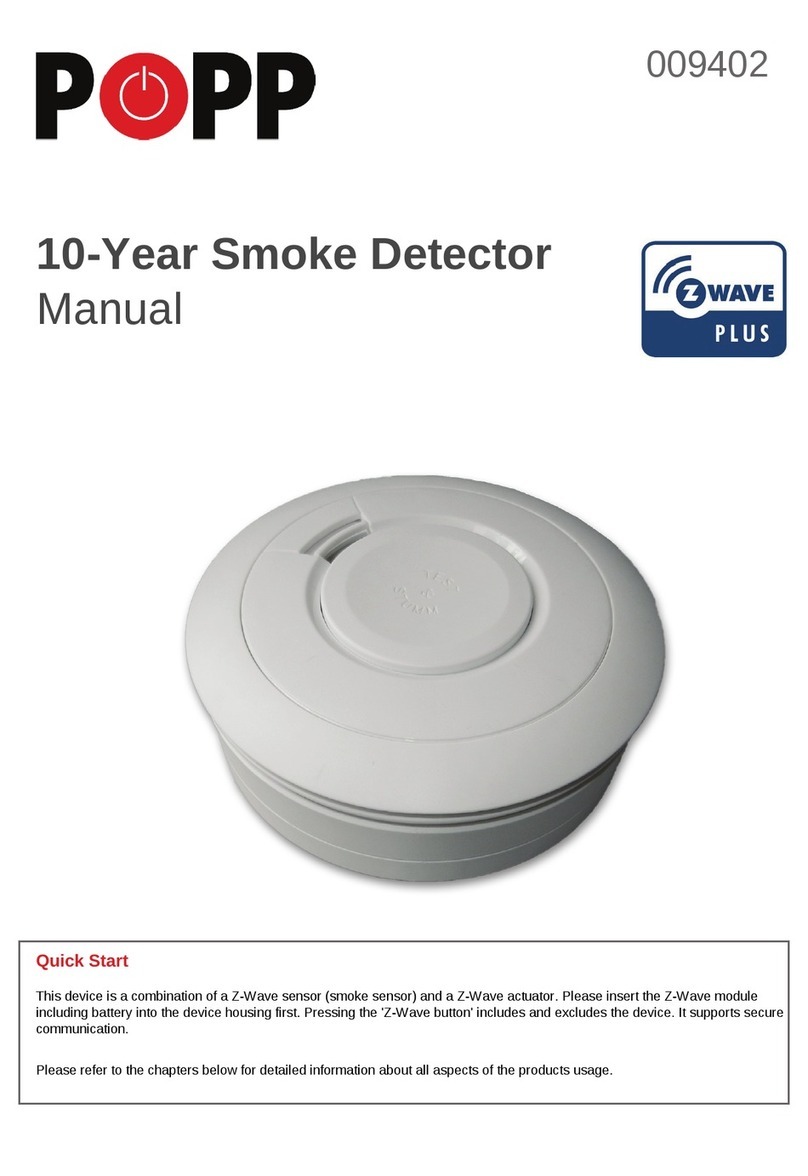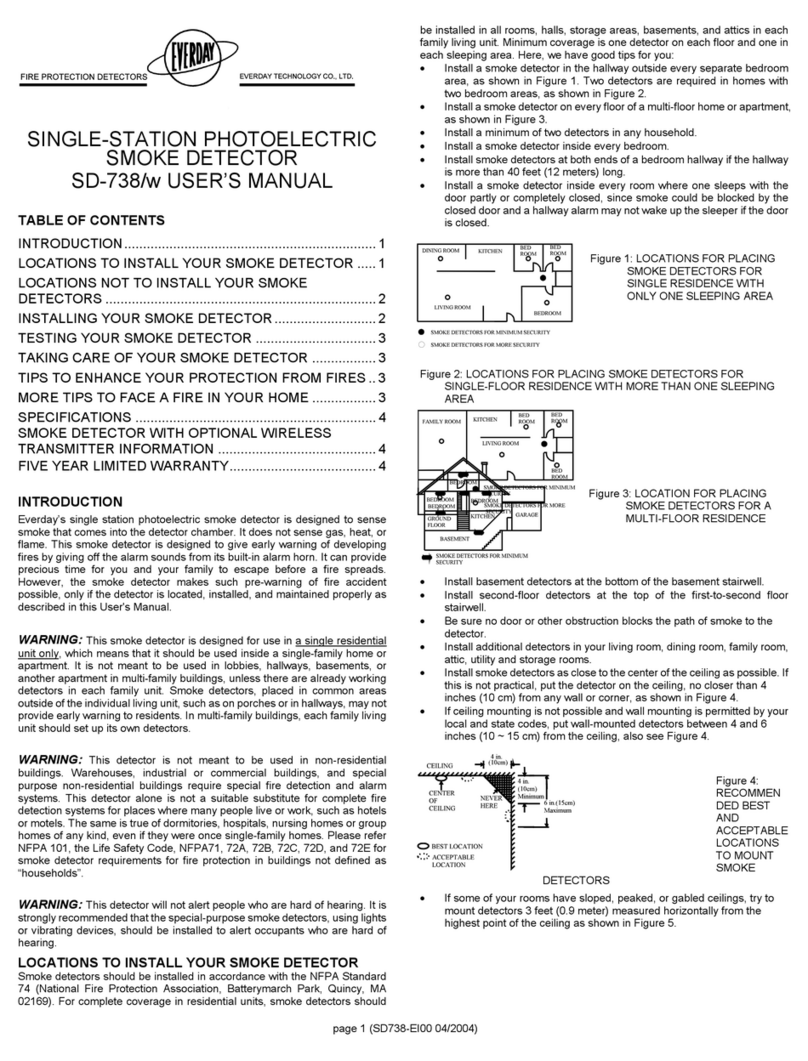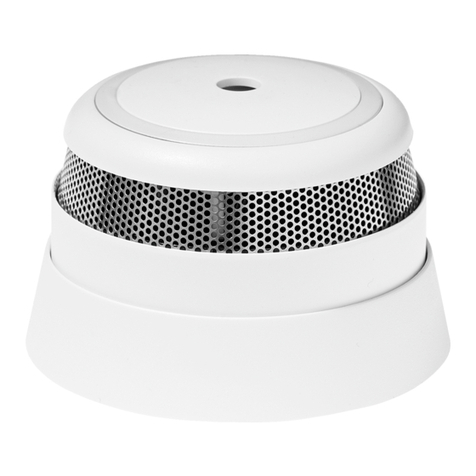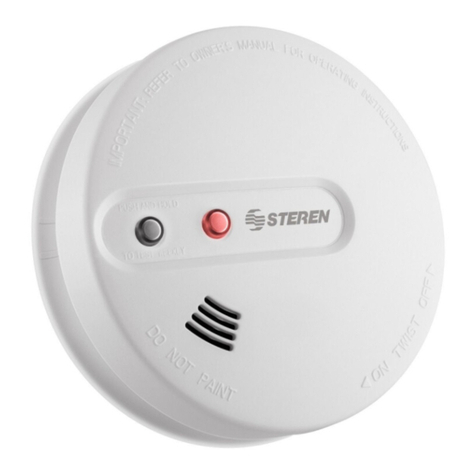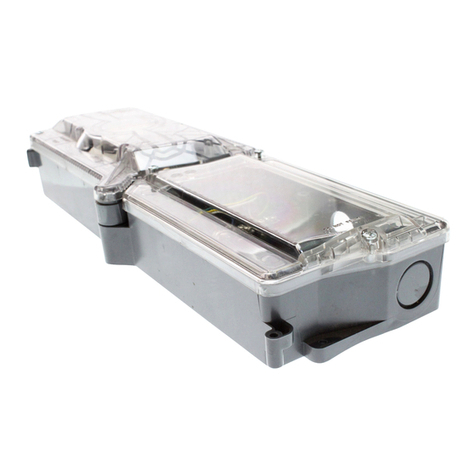Document NO.:RD-528A-39-001 Version: E 20170920
- 3 -
CAUTION: Due to the loudness (85 decibels) of the alarm,
Always stand an arms-length away from the unit when testing.
Test the alarm weekly to ensure proper operation. Erratic or
low sound coming from your alarm may indicate a defective
alarm. Refer to “Trouble shooting” section for a solution.
NOTE: WEEKLY TESTING IS REQUIRED
LED indicators
This smoke alarm is equipped with red LED indicators.
Standby Condition: The red LED will flash every 32 seconds
to indicate that the smoke alarm is operating properly.
Alarm Condition: When the alarm senses products of
combustion and goes into alarm, the red LED will flash
rapidly (one flash per second).The rapid flashing LED and
pulsating alarm will continue until the air is cleared or the test
button is released.
Low battery trouble indication: An intermittent “chirp”
accompanied by a red LED flash every 32 seconds indicates a
low battery.
Fault indication: This chirp will occur between the flashes of
the red LED indicator light.
SMOKE SENSING CHAMBER OPERATION: This alarm
will “chirp” if any of the components in the smoke sensing
chamber fail. This chirp will occur between the flashes of the
red LED indicator light. (If the chirp occurs at the same time
as the red LED flash, indicating a low battery information).
NOTE: WEEKLY TESTING IS REQUIERED.
DANGER: If the alarm sounds, and it is not being tested, it
means the unit is sensing smoke, THE SOUND OF THE
ALARM REQUIRES YOUR IMMEDIATE ATTENTION AND
ACTION.
Repair:
Caution: Do not attempt to repair the alarm. This will void
your warranty. If the alarm is not operating properly, and is
still under warranty, return it to the original place of purchase.
Pack it in a well-padded carton, and ship to the original place
you buy. If the alarm is no longer under warranty, have a
licensed electrician replace it immediately with a comparable
alarm.
DEVELOP AND PRACTICE A PLAN OF
ESCAPE
•Install and maintain fire extinguishers on every level of the
home and in the kitchen, basement and garage. Know how
to use a fire extinguisher prior to an emergency.
•Make a floor plan indicating all doors and windows and at
least two (2) escape routes from each room. Second story
windows may need a rope or chain ladder.
•Have a family meeting and discuss your escape plan,
showing everyone what to do in case of fire.
•Determine a place outside your home where you all can
meet if a fire occurs.
•Familiarize everyone with the sound of the smoke alarm and
train them to leave your home when they hear it.
•Practice a fire drill at least every six months, including fire
drills at night. Ensure that small children hear the alarm and
wake when it sounds. They must wake up in order to
execute the escape plan. Practice allows all occupants to test
your plan before an emergency. You may not be able to
reach your children. It is important they know what to do.
•Current studies have shown smoke alarms may not awaken
all sleeping individuals, and that it is the responsibility of
individuals in the household that are capable of assisting
others to provide assistance to those who may not be
awakened by the alarm sound, or to those who may be
incapable of safely evacuating the area unassisted.
WHAT TO DO WHEN THE ALARM SOUNDS
1. Alert small children in the home to quickly follow the
family escape plan.
2. Leave immediately by your escape plan. Every second
counts, so don’t waste time getting dressed or picking up
valuables.
3. In leaving, don’t open any inside door without first feeling
its surface. If hot, or if you see smoke seeping through
cracks, don’t open that door! Instead, use your alternate exit.
If the inside of the door is cool, place your shoulder against
it, open it slightly and be ready to slam it shut if heat and
smoke rush in.
4. Stay close to the floor if the air is smoky. Breathe shallowly
through a cloth, wet if possible.
5. Once outside, go to your selected meeting place and make
sure everyone is there.
6. Call the fire department from your neighbor’s home -not
from yours!
7. Don’t return to your home until the fire officials say that it
is all right to do so. There are situations where a smoke
alarm may not be effective to protect against fire as stated in
the NFPA Standard 72.
8. For instance:
a) Smoking in bed
b) Leaving children home alone
c) Cleaning with flammable liquids, such as gasoline
Note: These guidelines will assist you in the event of a fire,






